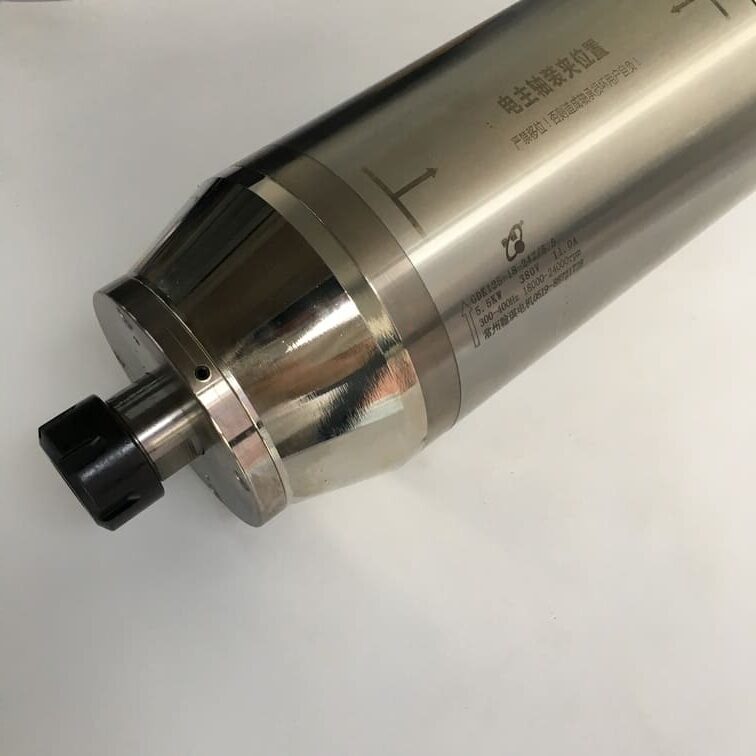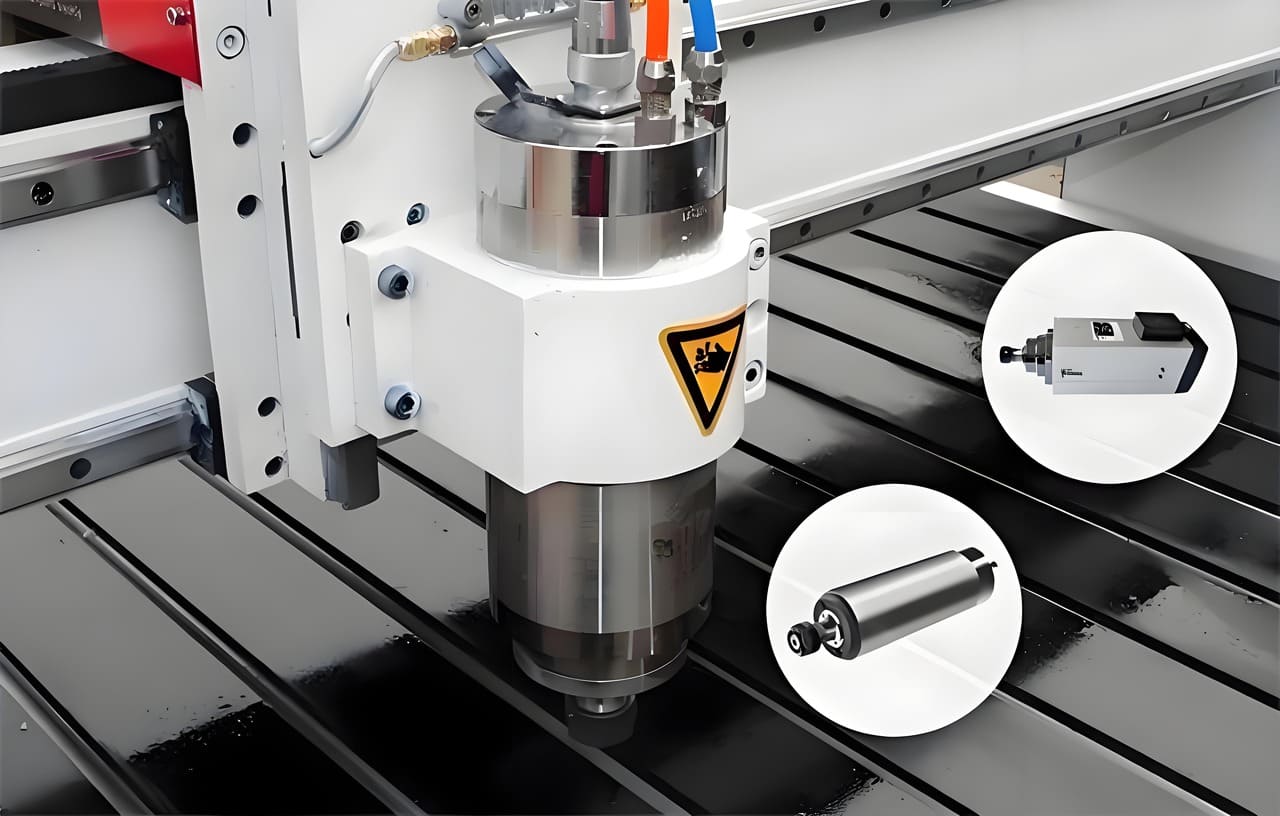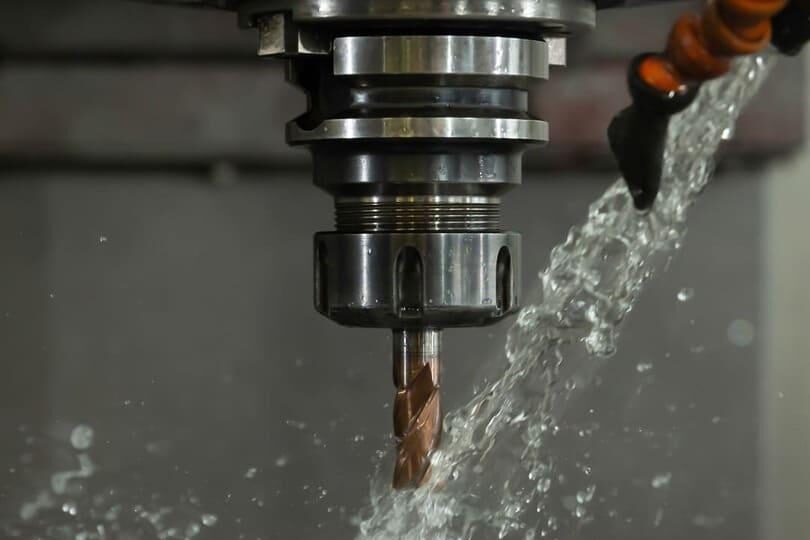Introduction
Have you ever wondered why a CNC spindle with a power rating of 220VAC and 10 amps results in only 2.2 kW of power? Understanding CNC spindle power calculation is crucial for maximizing performance in your CNC machinery. In this article, we’ll break down the science behind these figures, explore how voltage, current, and other factors influence spindle performance, and provide insights into future trends in spindle technology.
This guide will not only help you understand power equations but also offer practical advice on selecting the right CNC spindle for your projects. Whether you’re a professional machinist or an enthusiast working with CNC machines, this article will explain everything you need to know about CNC spindle power.
The Role of Voltage and Current in Power Calculation
CNC spindles rely on the relationship between voltage, current, and power to function effectively. The power of any electrical device, including CNC spindles, can be calculated using the formula:
Power (P) = Voltage (V) x Current (I)
For instance, a CNC spindle running on 220VAC and drawing 10 amps will have a power rating of 220V × 10A = 2,200 watts or 2.2 kW. This relationship is essential for users looking to optimize the performance of their CNC spindle motors in various applications.
However, simply knowing the power equation isn’t enough. Factors like efficiency, heat dissipation, and mechanical load all contribute to the overall performance of a spindle for CNC machines.
Why Power is Measured in Kilowatts for CNC Spindles
Power ratings for CNC spindles are often listed in kilowatts (kW) because kilowatts provide a more manageable way to express large amounts of power. For instance, a CNC spindle might consume thousands of watts during operation, and expressing that as “kilowatts” simplifies the information.
Measuring in kW allows machinists and engineers to quickly compare the performance of different CNC router spindles, especially in larger projects or industrial settings. A multi-spindle CNC machine may require much higher power consumption, and knowing the kilowatt ratings can help you determine if your electrical system can handle the load.
Breaking Down the 220VAC Input for CNC Spindles
A typical CNC spindle motor that uses 220VAC power input converts electrical energy into mechanical energy, which drives the cutting tool. But how does 220VAC specifically factor into the power equation?
AC voltage, or alternating current, is commonly used in CNC machines because of its efficiency in power transmission over long distances. In most residential or commercial workshops, 220VAC is readily available. When paired with the correct amperage, this voltage helps achieve the desired power output for efficient cutting operations.

How 10 Amps Affect CNC Spindle Performance
The amperage drawn by a CNC spindle motor affects its performance in several key ways. First and foremost, higher amperage means the motor can draw more power, which translates into greater torque and cutting ability. However, drawing too much amperage can lead to increased heat and potential motor failure.
For a 220VAC system, drawing 10 amps gives a power output of 2.2 kW. This is more than enough for many standard CNC applications, including wood routing, light metal cutting, and engraving.
Material Resistance and Its Impact on Spindle Power
One often-overlooked factor in calculating CNC spindle power is the material you’re working with. Different materials offer varying levels of resistance, which can impact how much power your spindle motor requires to make precise cuts.
For example, cutting soft materials like wood with a spindle for CNC machine requires significantly less power than cutting through tough metals like stainless steel. The higher the material resistance, the more strain is put on the spindle motor.
The Significance of Spindle Speed in Power Consumption
Spindle speed plays a critical role in determining how much power your CNC machine consumes. Higher spindle speeds increase the rate of material removal, but they also require more power. For instance, a spindle CNC running at 24,000 RPM will draw significantly more power than one running at 12,000 RPM.
Finding the balance between speed and power consumption is key. Faster isn’t always better, especially when cutting materials that generate a lot of heat. The CNC router spindles you choose must be matched not only to the material but also to the desired speed and power output.
Cooling Systems and Their Effect on Power Efficiency
CNC spindles generate significant amounts of heat during operation, particularly when running at high speeds or cutting dense materials. Cooling systems are essential for maintaining power efficiency and prolonging the lifespan of the motor.
There are two main types of cooling systems used in CNC spindles: air-cooled and water-cooled. Water-cooled spindles tend to offer better efficiency, as water is more effective at absorbing heat than air.
Standard Power Ratings and What They Mean for Users
Understanding the standard power ratings of CNC spindles is crucial when choosing the right motor for your machine. Most CNC spindle motors are rated between 0.5 kW and 7.5 kW, depending on their size and intended application. For small workshops or hobbyists, a spindle rated between 1.5 kW and 3 kW is often sufficient.
For industrial applications requiring heavy-duty cutting, a higher power rating of 4 kW or more may be necessary, especially when working with metals.
High-Power vs. Low-Power Spindles: A Comparative Analysis
Choosing between high-power and low-power spindles depends largely on the type of work you plan to do. High-power CNC spindles (4 kW or more) are ideal for industrial use, where fast, deep cuts in hard materials are required. However, they consume more energy and generate more heat.
On the other hand, low-power spindles (under 3 kW) are sufficient for hobbyist projects and light commercial work. They are more energy-efficient but may struggle with harder materials or high-speed cutting.
Tools and Formulas for Accurate Power Calculation
To calculate spindle power accurately, you can use several tools and formulas. Aside from the basic equation (P = V × I), you can also factor in the efficiency of the motor and the load being placed on the spindle.
Specialized CNC software can also help by providing real-time data on power consumption, speed, and torque, allowing you to make adjustments on the fly.
Real-World Applications: Calculating Power for Specific Projects
In real-world CNC applications, accurately calculating spindle power is essential for project success. For example, when working with a multi-spindle CNC machine, you may need to balance multiple spindle power settings based on the material, cutting depth, and desired finish.
Miscalculating spindle power can lead to poor performance, tool wear, or even machine failure.
Advances in Spindle Design for Better Power Management
Recent advances in CNC spindle design have focused on improving power management. Innovations such as variable-frequency drives (VFDs) allow machinists to adjust the spindle speed and torque dynamically, optimizing power usage for different tasks.
Other developments include brushless motors, which offer higher efficiency and longer lifespans compared to traditional brushed motors.
The Role of Software in Optimizing Spindle Power Usage
Software plays an increasingly important role in CNC spindle power management. Modern CNC software can optimize spindle speed, feed rate, and cutting depth automatically based on the material being processed.
Additionally, many CNC programs offer real-time monitoring, allowing operators to track spindle performance and make adjustments as needed.

Frequently Asked Questions
- What is the ideal power rating for a home CNC project?
- Can I upgrade my CNC spindle for higher power efficiency?
- How does ambient temperature affect CNC spindle power?
- Are there any safety concerns with high-power CNC spindles?
- Can software help in reducing the power consumption of my CNC machine?
Key Takeaways
- CNC spindle power is calculated using the formula P = V × I.
- Power ratings in kilowatts help compare different spindles efficiently.
- Material resistance, spindle speed, and cooling systems all impact power efficiency.
- High-power spindles are ideal for industrial applications, while low-power spindles suit hobbyist needs.
- Advances in spindle design and CNC software offer better power management and improved efficiency.

- RicoCNC has a team of professionals who have been engaged in the design, production, sales, and maintenance of electro spindles for many years. Our company accepts the purchase of various types of CNC spindles.
water-cooled CNC spindle motors
Edge banding machine spindle motors.
- If you need any CNC spindle, please contact us.

